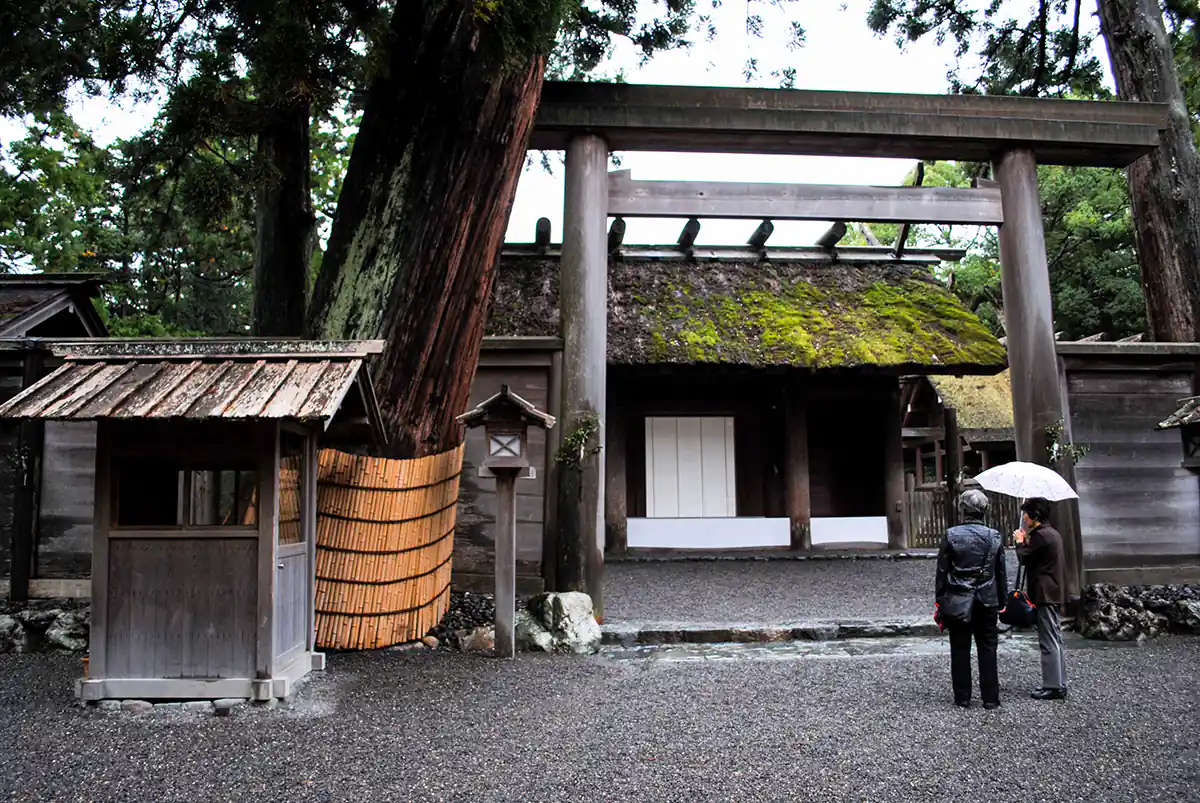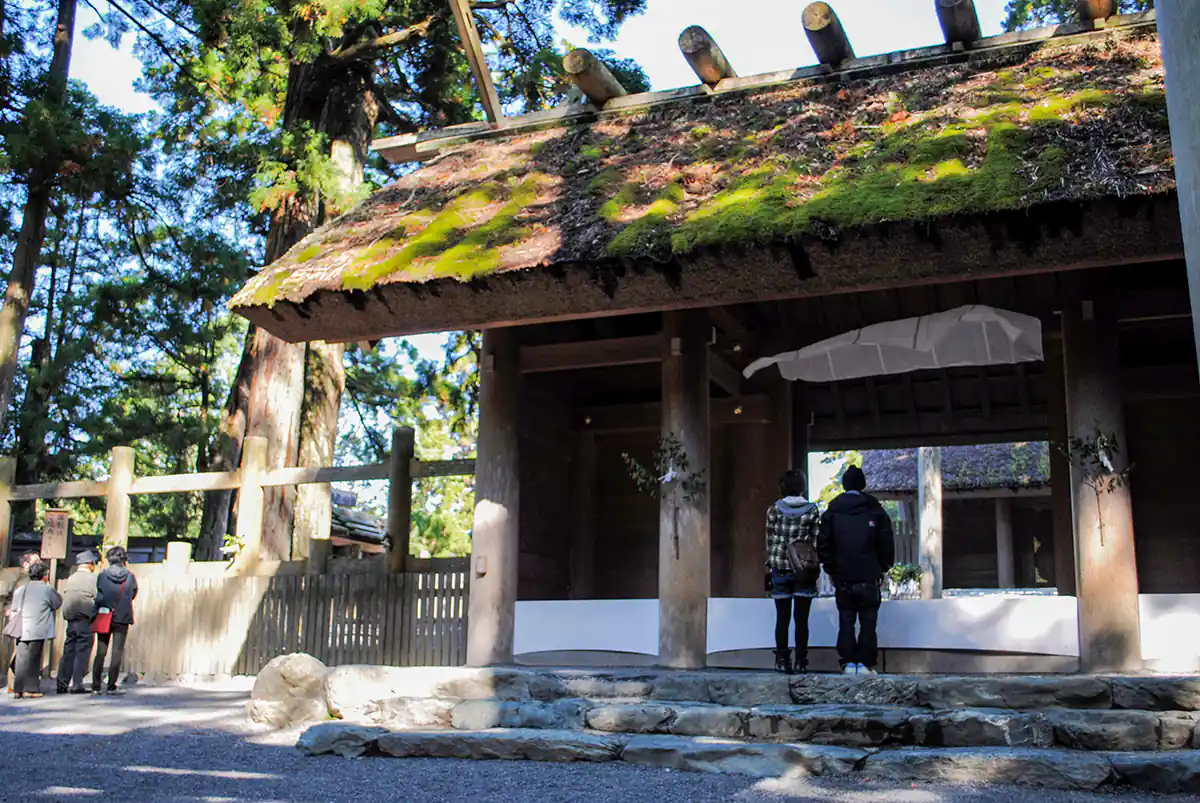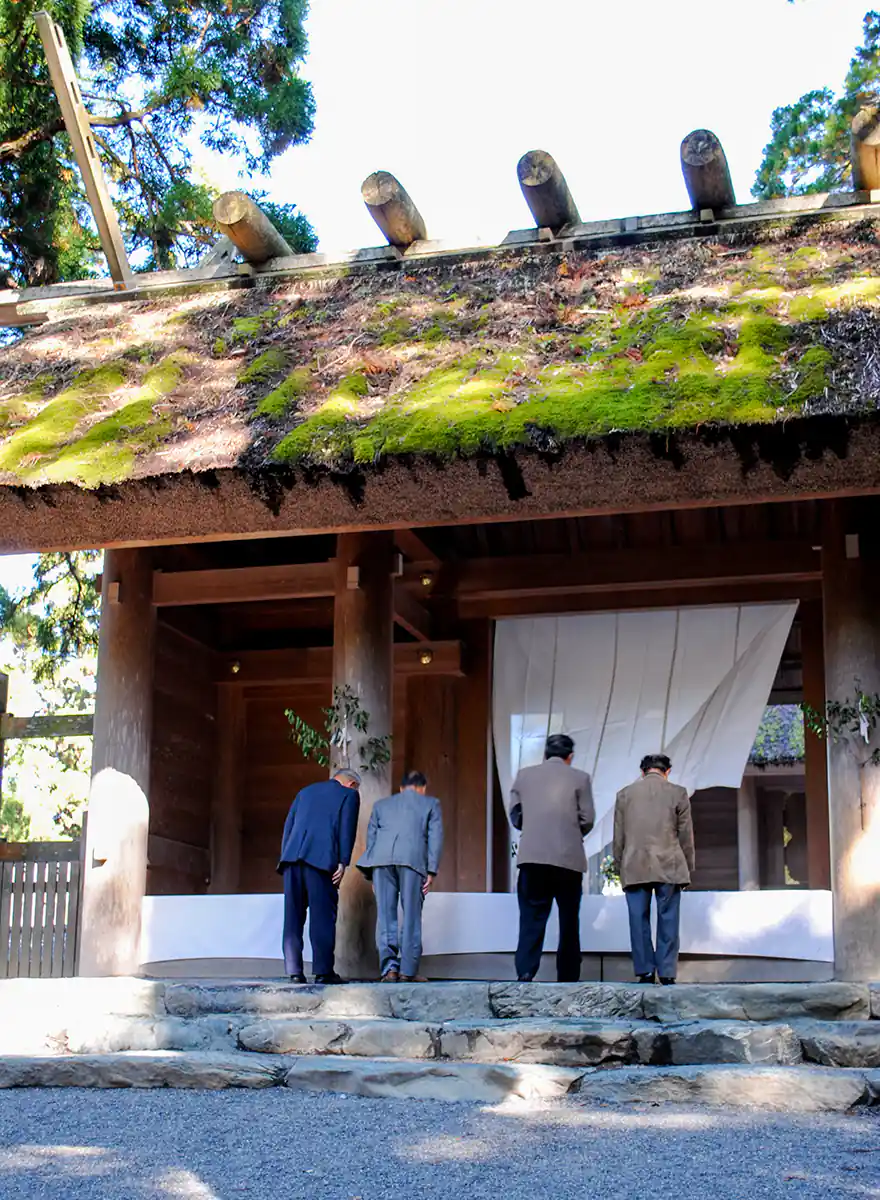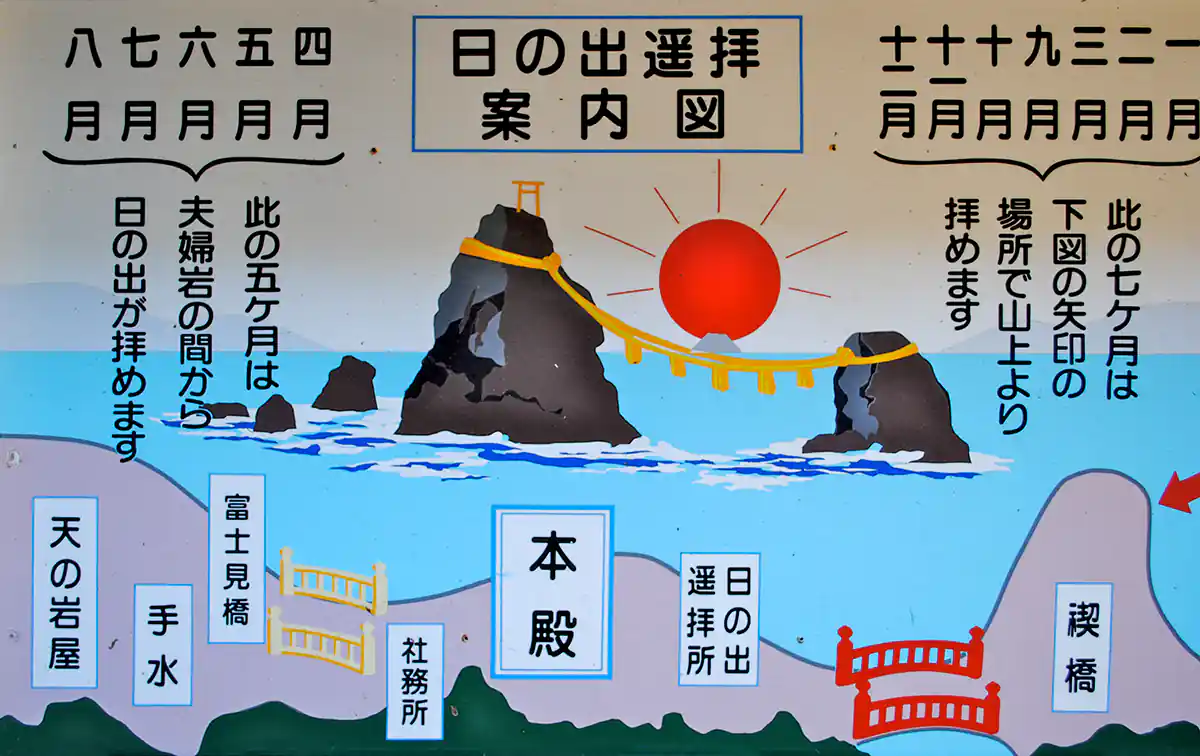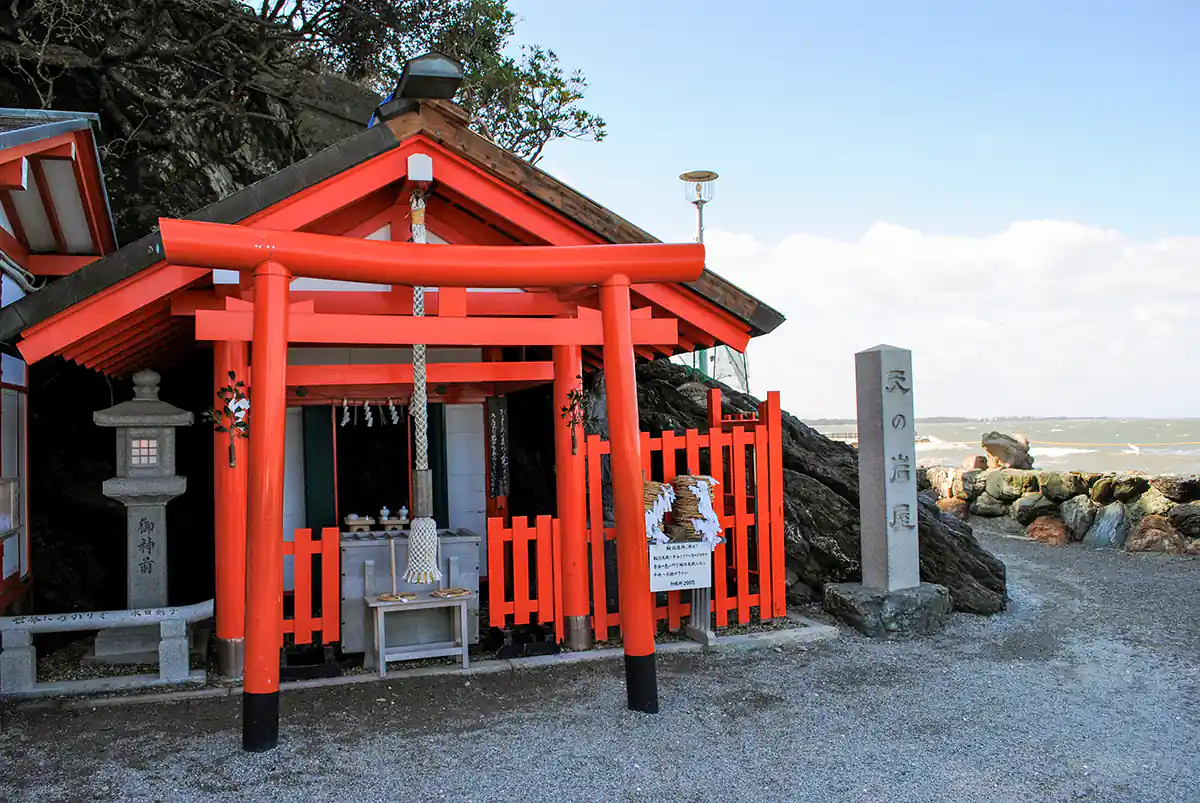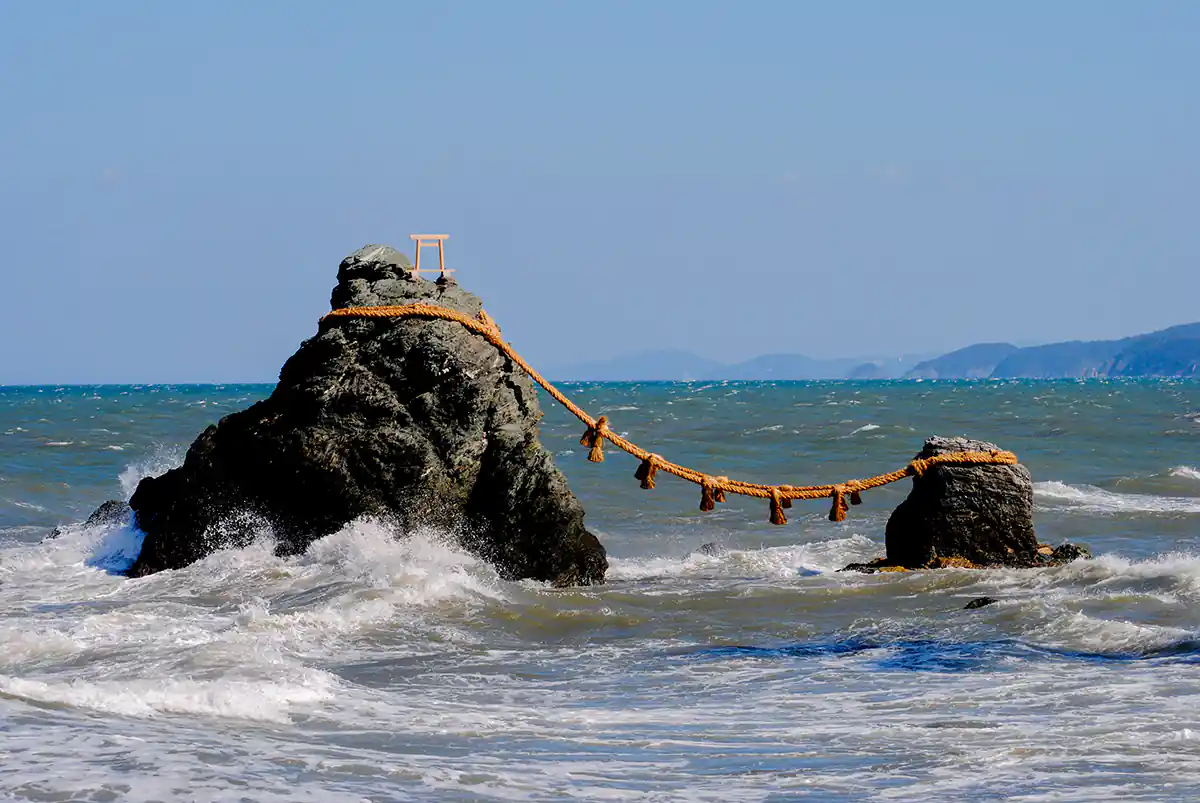Ise
Since ancient times, the Japanese people have lived by following nature. All over Japan, there are consecrated rocks and evergreen trees in which Kami (supernatural beings) reside, as well as sanctuaries, generally called jinja, in which Kami are enshrined and which usually consist of a building surrounded by a grove of trees. According to Shinto, the indigenous religion of Japan, Kami are worshipped in matsuri, which include solemn ceremonial occasions and festivals at the local level.
There are more than 100,000 Shinto sanctuaries in Japan, which are at the center of the country's spiritual life. Historically, Jingu, the Grand Shrine of Ise, has held the most honored place among all the Shinto temples. It is considered to be the spiritual home of the Japanese people, most of whom wish to make a pilgrimage to Jingu at least once during their lifetime. More than six million pilgrims and worshippers come to Jingu every year.
Popularly known as “O-Ise-san” or officially as Jingu, Ise Jingu is principally composed of the Naiku and Geku shrines, where the supreme deity Amaterasu Omikami and the great deity Toyouke Omikami are worshiped, respectively. The Naiku and Geku shrines are set amidst ancient forest groves with hundreds of towering Cryptomeria trees. In addition, Jingu also includes fourteen auxiliary sanctuaries, as well as one hundred and nine lesser sanctuaries.
Access to both the Naiku and Geku shrines is strictly limited to certain high-ranking priests, priestesses, and members of the royal family, with the common public allowed to see little more than the thatched roofs of the central structures, hidden behind four tall wooden fences. The High Priest or Priestess of the Jingu shrine complex must come from the Japanese Imperial Family and be responsible for watching over the Shrines.
The Jingu shrines of Naiku and Geku are believed to have been first constructed in the fifth century A.D. Since the seventh century A.D., the Naiku, Geku, and their respective auxiliary sanctuaries have been rebuilt every twenty years, and the symbols of the Kami they enshrine have been ceremoniously transferred in solemn nocturnal ceremonies from the old sanctuary buildings to newly reconstructed buildings in their adjoining sanctuaries. This ceremonial system, Shikinen Sengu, is an elaborate Kannamesai (Offering of the First Fruits) ceremony. It involves the reconstruction of the sanctuary buildings and the renewal of the sacred apparel and treasures, which are carried to the new sanctuary buildings along with the symbol of the Kami on the occasion of the Sengyo (Transfer) ceremony. By performing the Shikinen Sengu every twenty years, the Japanese people receive renewed blessings from their Kami and pray for peace in the world.
The hills beyond Jingu are part of the sacred grounds of Naiku. Until the Middle Ages, all of the timber used to reconstruct the sanctuaries of Jingu on the occasion of the Shikinen Sengu was obtained from these forests. Since then, however, the 13,500 trees necessary for Shikinen Sengu have been obtained from forests in other regions of the country. During the Shikinen Sengu, the former sanctuary buildings are deconstructed. Their materials, which are considered sacred, are distributed to different sanctuaries in the Ise region and elsewhere in Japan to be used in the construction and reconstruction of other temple buildings.
In the lead-up to the rebuilding of the shrines, several festivals are held to mark special events. The Okihiki Festival is held in the spring over two consecutive years and involves people from surrounding towns dragging huge wooden logs through the streets of Ise to Naiku and Geku. The present buildings, dating from 1993, are the 61st iteration and are scheduled for rebuilding in 2013.
The most important annual festival held at Ise Shrine is the Kannamesai Festival. Held in October each year, this ritual makes offerings of the first harvest of crops for the season to Amaterasu. An imperial envoy carries the offering of rice harvested by the Emperor himself to Ise, as well as five-colored silk cloth and other materials, called heihaku.
Approximately fifteen kilometers east of the city of Ise and directly on the seacoast is the small shrine of Futami Okitama. Two rocks rising from the sea about one hundred meters from the shrine are called Meotoiwa. The Meotoiwa, which comprises the nine-meter-high Male Rock and the four-meter-high Female Rock connected with an enormous rope, has been a famous symbol of matchmaking and a place of worship since ancient times. The site is considered auspicious for married or courting couples.

Martin Gray is a cultural anthropologist, writer and photographer specializing in the study of pilgrimage traditions and sacred sites around the world. During a 40 year period he has visited more than 2000 pilgrimage places in 160 countries. The World Pilgrimage Guide at sacredsites.com is the most comprehensive source of information on this subject.


